Amaranthus seeds are known for their nutritional value, as they are a rich source of protein, dietary fiber, panthothenic acid, vitamin B6, folate, and several dietary minerals (https://en.wikipedia.org/wiki/Amaranth). In pre-Hispanic times, amaranth was cultivated by the Aztec and their tributary communities in a quantity similar to maize and thought to have represented up to 80% of their energy consumption before the Spanish conquest (https://en.wikipedia.org/wiki/Amaranth; https://en.wikipedia.org/wiki/Amaranth_grain).
There are also colorful Amaranthus species and grown as ornamental purposes (https://stock.adobe.com/jp/search?k=%22amaranth+plant%22 https://en.wikipedia.org/wiki/Amaranthus_hypochondriacus; https://www.echocommunity.org/ja/resources/bdaae15f-c558-4170-a4e0-0eb156a7370f; https://www.growveg.com/plants/us-and-canada/how-to-grow-amaranth-ornamental/).
Globe amaranth ‘Fireworks’ (Gomphrena globosa ‘Fireworks’ ) is one of the colorful Amaranthus species and planted as garden and roadside plants (https://plants.ces.ncsu.edu/plants/gomphrena-globosa-fireworks/common-name/globe-amaranth-fireworks/; https://www.shutterstock.com/search/globe-amaranth-flowers?page=9).
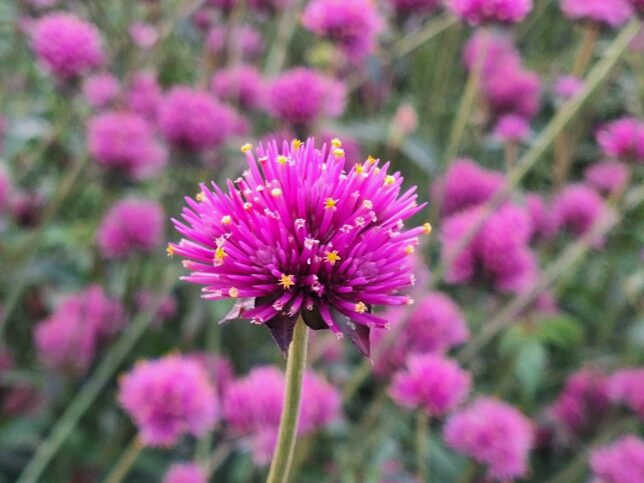
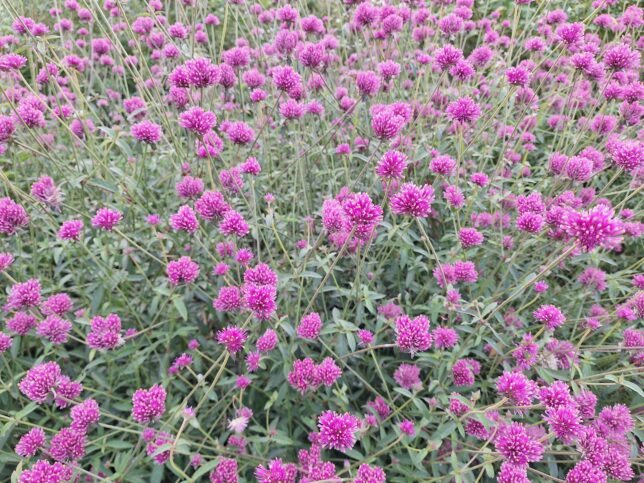
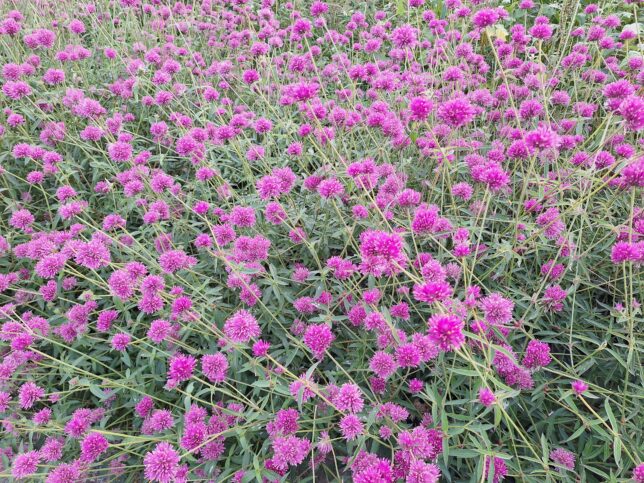
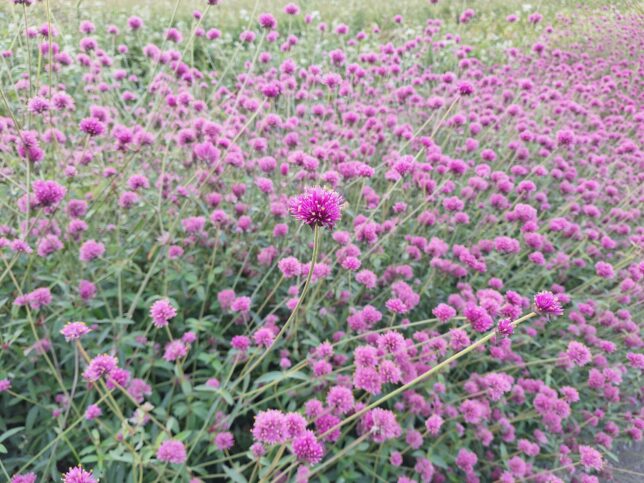
Globe amaranth ‘Fireworks’ flowers planted along a street, Hokuto, Yamanashi, 9/25, 2024
The garden cosmos (Cosmos bipinnatus) is a typical autumn plant, grown here and there (https://en.wikipedia.org/wiki/Cosmos_bipinnatus).
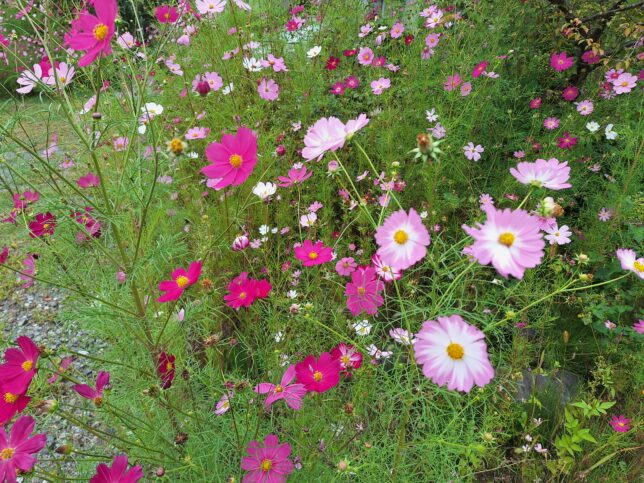
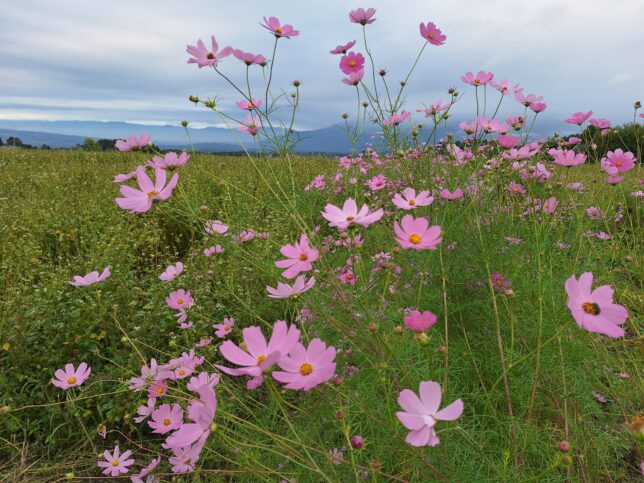
Cosmos flowers, Hokuto, Yamanashi, 9/25, 2024
